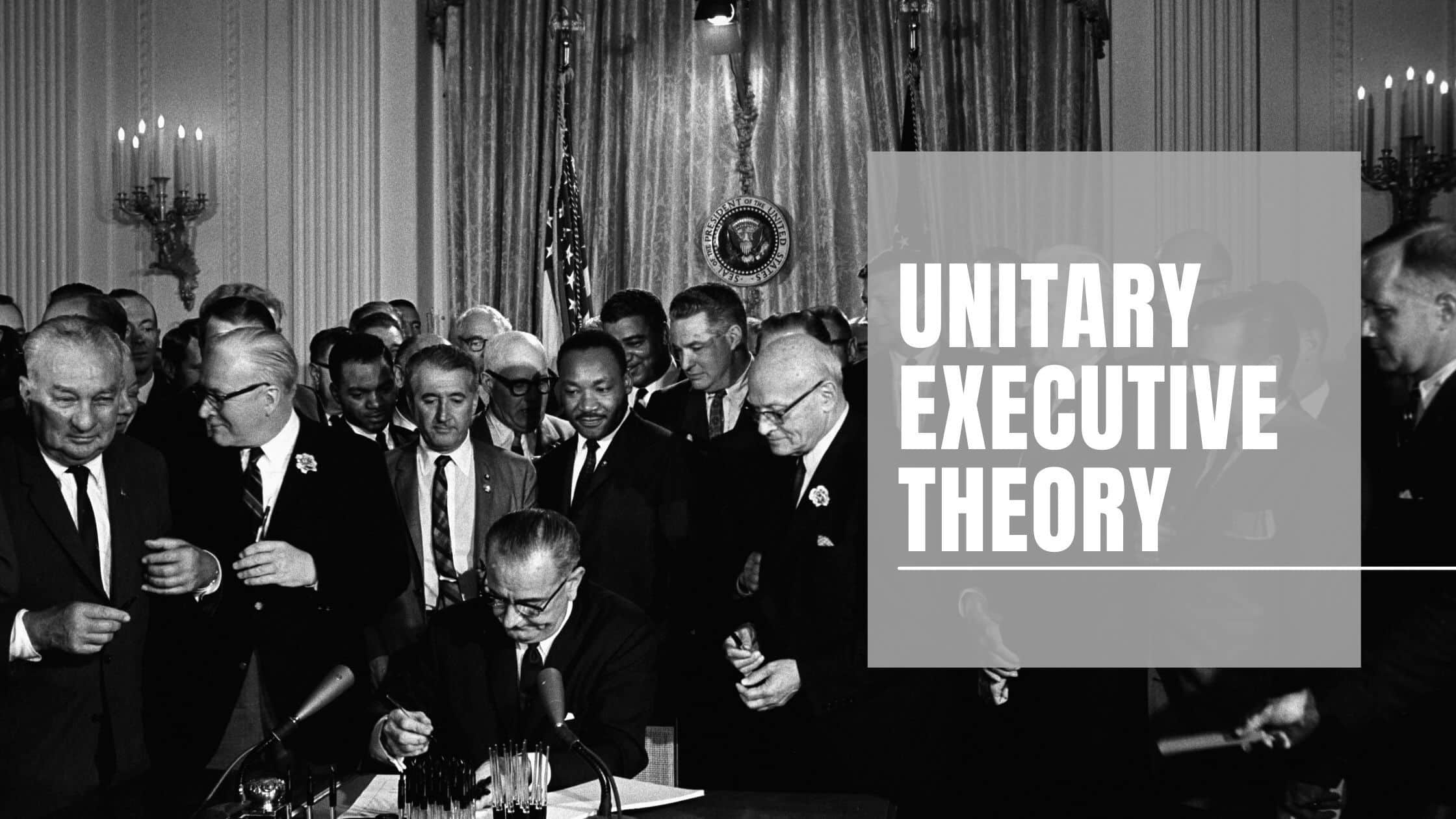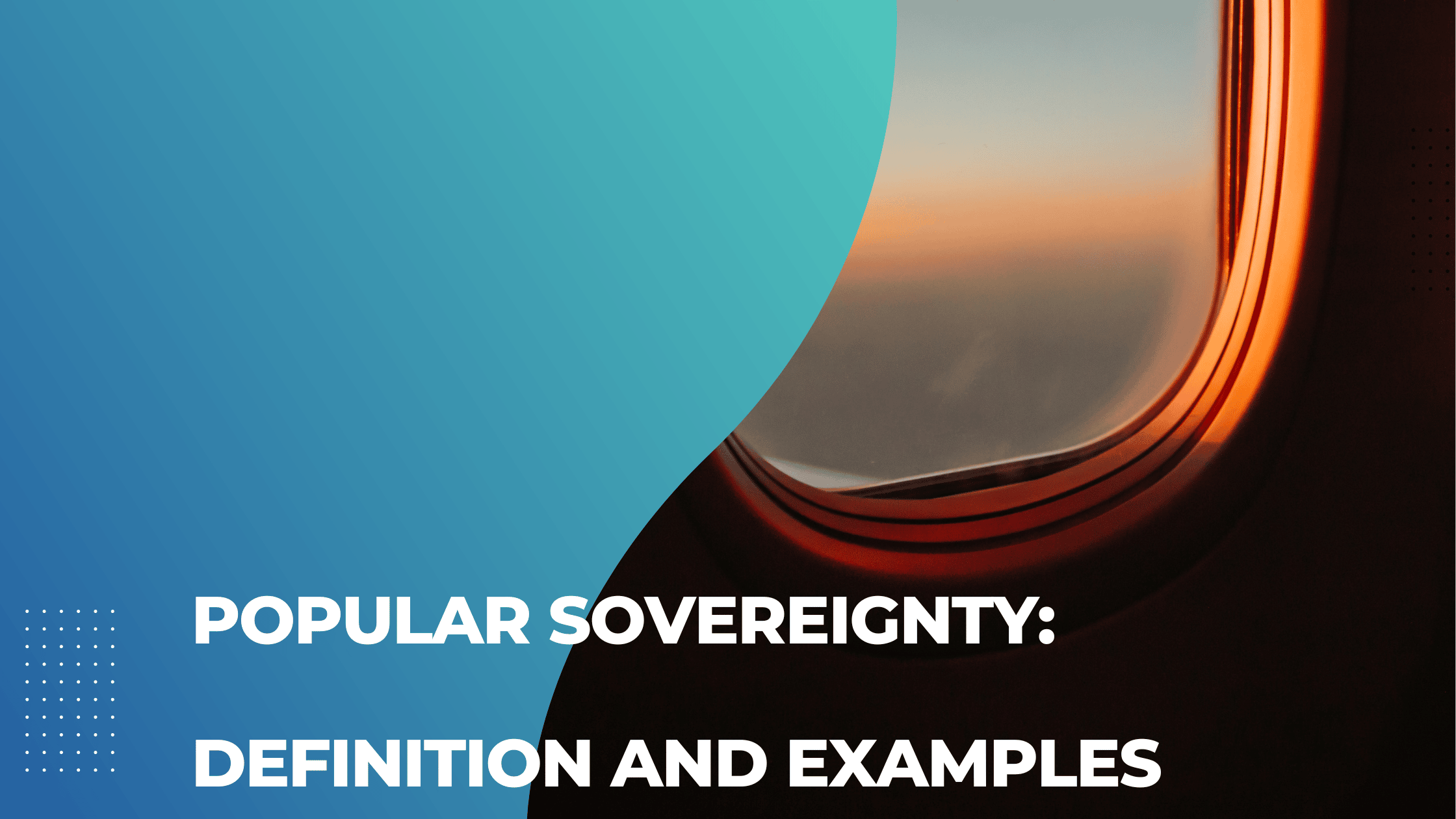Table of Contents
TogglePolitical Science says that in Unitary Executive Theory, the President Has the Final Say
Unitary executive theory is the concept that the president controls the entire executive branch of the American government. While the executive branch officials can advise presidents and criticize their decisions, they cannot overrule them. The cabinet assists in making executive decisions, but the president always has the final say.
Extent of President’s Power
While it is mostly true that the president controls the executive branch of the government, there is disagreement about the extent of presidential power.
In theory, Congress can interfere with some of the president’s executive decisions. For example, Congress might fire an executive branch official against the president’s will in certain circumstances.
However, even in this case, Congress’s power is limited. If Congress fires an official, the president continues to have the power to arbitrate all executive decisions. Only the legislative and judicial branches of the government are able to limit the president’s power.
Congress Can Limit the Executive Branch’s Power
The argument that the president’s executive powers are somewhat limited is that Congress controls the executive branch’s powers. This means that Congress has the right to limit the president’s power if they see the presidential control is abusing executive powers.
Taking powers away from the president and the executive branch would not be politically easy to do, but it is possible.
Should the President Have this Much Power?
According to the constitution, the president is supposed to be the single executive in the United States government. However, in many ways, the president is the single executive, as the United States does not give any real executive power to other executives.

Get Smarter on US News, History, and the Constitution
Join the thousands of fellow patriots who rely on our 5-minute newsletter to stay informed on the key events and trends that shaped our nation's past and continue to shape its present.
In American Politics, not everyone agrees that the system should work this way. Some say that greater presidential power is harmful and that the president’s authority should be reduced to control the entire executive branch. Unfortunately, it would take a change in constitutional law to change this, and more than a slight majority would have to agree to this change.
Numerous Countries Do Not Subscribe to the Unitary Executive Theory
In many countries, there is an executive branch of the government where multiple people share power. The president or prime minister is only one of these government officials, and the president does not have executive privilege regarding decisions.
While the United States Federal Government makes the president the only executive, some US states have multiple executives. For example, the state governor might have to share power with an attorney general, a lieutenant governor, a secretary of state, or any other elected official.
How Does the President’s Executive Privilege Work?
The constitution’s first article deals with the president’s power to veto laws and the limitations of this power. If the president sends a piece of legislation back to Congress with objections or ignores it for ten days, it is vetoed.
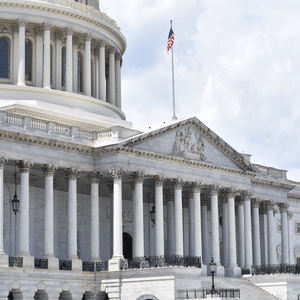
Congress has the authority to overrule a president’s veto.
The president does not have unlimited authority to refuse every law that legislators pass. If two-thirds of the House and two-thirds of the Senate want a law passed, they can overrule the president’s veto.
While the president has much power and effectively complete control over the executive branch, his powers are still limited. Other branches of government can overrule the president’s decisions. For example, Congress can force the president to accept a law that they would rather veto, and the Justice Department can declare a law the president approves of to be unconstitutional.
Unitary Executive Theory in Early American Politics
As far back as the Philadelphia Constitutional Convention in 1787, people argued whether the United States should have more than one executive. During this historic convention, the American constitution was completed, and many ideas were discussed and debated. Much of the structure of the American government even today comes from that convention.
Significant players were on both sides of the debate about having multiple executives or giving the president all of the executive power. The term “unitary executive” was used at least as far back as the convention.
There were two plans, the Virginia Plan (the president being the sole executive) and the New Jersey Plan (to have the president share power with other executives). Notable names, including George Mason, Elbridge Jerry, and Edmund Randolph, preferred the New Jersey plan. If the plan had been accepted, there might be several executives or an executive council in the United States today.
James Wilson Argued for a Unitary Executive
James Wilson, a founding father and future Supreme Court judge, helped convince people to go with the Virginia Plan. He argued that decision-making needed to be quick and decisive and that giving the president sole executive power would make this possible.
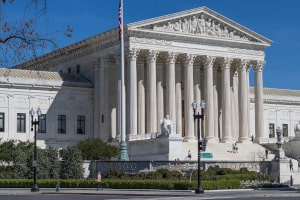
James Wilson went on to become a Supreme Court justice.
Wilson made the powerful argument that the president should be held responsible for every decision he makes. With an executive council, the president could blame a poor or illegal decision on to council members. However, with the president being the only true executive, he would have to take responsibility for any bad decision.
Wilson also argued that governments with too many executives existed and did not function well. There was “neither vigor, decision, nor responsibility, in them with numerous executives.” Wilson wasn’t the only one who argued for a single executive.
Wilson’s Argument Had Much Support
Before the Philadelphia Convention, some letters from an anonymous “Federal Farmer” were published and quickly became popular. These letters were against federalism. In other words, they opposed a strong central government.
These well-thought-out anti-federalist writings argued that a unitary executive was a superior concept. The anonymous author claimed that a single executive could pass and veto laws quickly and uniformly.
Federalists Were Also In Favor of a Single Executive
Anti-federalists and fervent federalists such as James Madison favored the president having all the power. Madison argued that while the legislative government should be divided into branches, the executive government should be in a single person’s hands.
The Constitution Suggests that the President is the Only Real Executive
After the Philadelphia Convention was over and the constitution was written, Alexander Hamilton pointed out that the constitution implies a single executive.
The constitution refers to the legislative branch of the government as controlled by “congress,” implying multiple people. However, it also says that “the executive power shall be vested in a President of the United States”.
Does the President Require the Approval of Congress to Remove Someone from the Executive Branch?
A 1926 court decision (Myers vs. the United States) says that the President of the United States can remove any individual from the executive branch. Therefore, even if Congress strongly disapproves of this person being fired, they can do nothing to overrule the decision.
Is the President Truly a Unitary Executive?
One could argue that the Donald Trump era proves that presidents are less in control of the executive branch of government than some people believe. The president has the executive authority to dismiss anyone they see as refusing to follow their orders if they are part of the executive council.
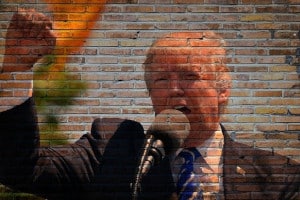
President Trump faced resistance to his agenda from within his administration.
However, many people in the government disobeyed and worked against President Trump. People would obey orders slowly, not obey them fully, and accept the risk of losing their jobs to disobey a president they disagreed with.
Presidents Have a Lot of Power
Presidents indisputably have a lot of power. No one could argue that Congress or anyone else controls them and makes them mere figureheads. The president is far more powerful than anyone else in the United States government.
The president’s powers include:
- Being the commander-in-chief of the military, with much more power than any high-ranking military officer
- Being able to appoint many members of the government, including all cabinet members and the heads of all agencies
- Being able to remove the influential people he appoints to these positions from office
- To pardon criminals or reduce their sentences
- To make treaties with other governments or to leave these treaties
- To veto legislation, with it being difficult although possible for Congress to overrule a veto. This was seen during the Reagan administration.
- To appoint people to the Supreme Court, if the Senate agrees to this
Presidential power is extensive, but is it too much or too little?
Neither President Trump nor Barack Obama changed the country nearly as much as some thought they would. The system of checks and balances decreased their presidential power and required them to be moderate. In addition, the unitary executive made it difficult for them to carry out some of their plans.
While the president primarily controls the executive council, other branches of the constitutional government can overrule it. People can work against a president from within the White House regardless of who has been elected into the role.
Should the United States Continue to Use This System?
Alexander Hamilton argued (Federalist Papers No.70) that a strong executive is necessary for a strong government. A weak executive prevents action and makes the government unable to do anything.
Perhaps, the checks and balances are strong enough, and there doesn’t need further limitations on the presidents’ power.
